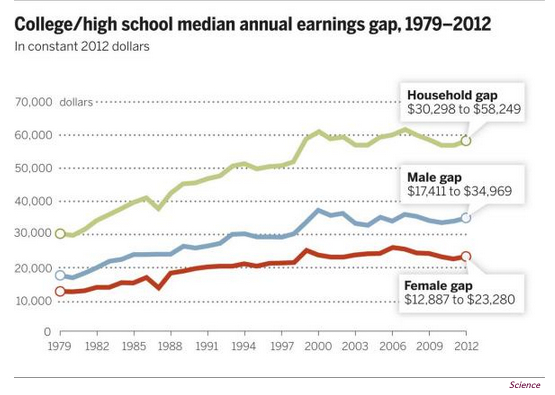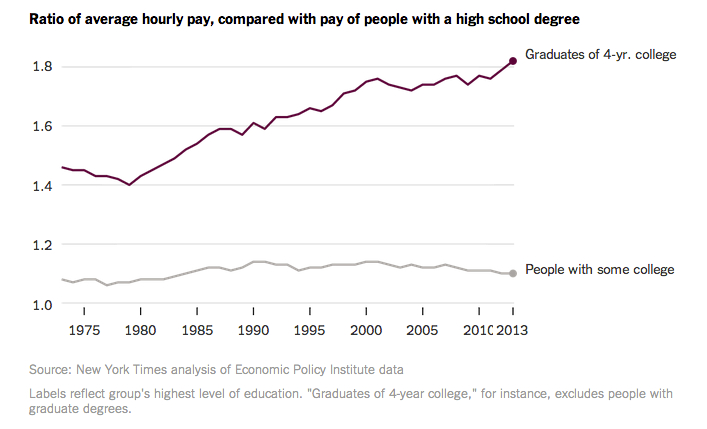
A Trade Dispute About My Washing Machine
May 29, 2014
An Amazing Story From a Graph
May 31, 2014Some economists have an unexpected reason for the college earnings premium.
First, the premium…
In 2011, a diploma from a 4-year college meant you would earn 83% more than your high school classmate who did not attend college. Looked at slightly differently (below), the college earnings premium can be shown as the dollar pay gap for households, men and women with a college degree and those without one.
In addition, much more than just attending college, it is the diploma that matters. The pay premium for a college dropout is only 10%.
So, yes, a diploma from a 4-year college boosts your labor force value. Asking “why,” though, takes us to some disagreement. The debate is between the human capital believers and a much smaller but growing group that says signaling is the reason.
The traditional view is that we learn skills during 4 years of college. Attending classes, taking exams, reading and doing research, we acquire thinking and writing skills. Correspondingly, our major determines the technical expertise with which we will graduate. Put it all together and you get human capital growth in college that makes a graduate much more valuable than a freshman.
By contrast, the signaling people say that college graduates’ labor market attractiveness comes from showing they could graduate. Being able to get that diploma means you have many of the skills you will need when you enter the labor force. You have to go to classes on time, pass exams, stick with a goal for 4 or 5 years and display perseverance. Students lacking the qualities they need to finish college are “filtered out.” Consequently, one leading advocate of the signaling model says the split is 20/80. 20% human capital and 80% signaling.
Our bottom line? Thinking about human capital and signaling, we can better understand why 45% of the people who enter college never receive an earnings premium because they drop out. We can consider what scholars like MIT economist David Autor say as a skills advocate and what George Mason economist Bryan Caplan explains about signaling. Perhaps then, (as David Autor says in a recent Science paper) we can concentrate less on the top 1% and more on diminishing inequality among the bottom 99%.
Which source of the labor force value of college makes the most sense to you? Please let us know in a comment.
![econlifelogotrademarkedwebsitelogo[1]](/wp-content/uploads/2024/05/econlifelogotrademarkedwebsitelogo1.png#100878)






